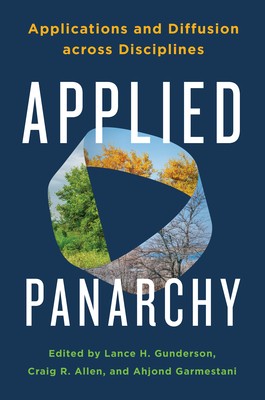
- We will send in 10–14 business days.
- Publisher: Island Press
- ISBN-10: 1642830895
- ISBN-13: 9781642830897
- Format: 15 x 22.6 x 2 cm, minkšti viršeliai
- Language: English
- SAVE -10% with code: EXTRA
Applied Panarchy (e-book) (used book) | bookbook.eu
Reviews
Description
After a decades-long economic slump, the city of Flint, Michigan, struggled to address chronic issues of toxic water supply, malnutrition, and food security gaps among its residents. A community-engaged research project proposed a resilience assessment that would use panarchy theory to move the city toward a more sustainable food system. Flint is one of many examples that demonstrates how panarchy theory is being applied to understand and influence change in complex human-natural systems. Applied Panarchy, the much-anticipated successor to Lance Gunderson and C.S. Holling's seminal 2002 volume Panarchy, documents the extraordinary advances in interdisciplinary panarchy scholarship and applications over the past two decades. Panarchy theory has been applied to a broad range of fields, from economics to law to urban planning, changing the practice of environmental stewardship for the better in measurable, tangible ways.
Panarchy describes the way systems--whether forests, electrical grids, agriculture, coastal surges, public health, or human economies and governance--are part of even larger systems that interact in unpredictable ways. Although humans desire resiliency and stability in our lives to help us understand the world and survive, nothing in nature is permanently stable. How can society anticipate and adjust to the changes we see around us? Where Panarchy proposed a framework to understand how these transformational cycles work and how we might influence them, Applied Panarchy takes the scholarship to the next level, demonstrating how these concepts have been modified and refined. The book shows how panarchy theory intersects with other disciplines, and how it directly influences natural resources management and environmental stewardship. Intended as a text for graduate courses in environmental sciences and related fields, Applied Panarchy picks up where Panarchy left off, inspiring new generations of scholars, researchers, and professionals to put its ideas to work in practical ways.EXTRA 10 % discount with code: EXTRA
The promotion ends in 21d.02:54:38
The discount code is valid when purchasing from 10 €. Discounts do not stack.
- Publisher: Island Press
- ISBN-10: 1642830895
- ISBN-13: 9781642830897
- Format: 15 x 22.6 x 2 cm, minkšti viršeliai
- Language: English English
After a decades-long economic slump, the city of Flint, Michigan, struggled to address chronic issues of toxic water supply, malnutrition, and food security gaps among its residents. A community-engaged research project proposed a resilience assessment that would use panarchy theory to move the city toward a more sustainable food system. Flint is one of many examples that demonstrates how panarchy theory is being applied to understand and influence change in complex human-natural systems. Applied Panarchy, the much-anticipated successor to Lance Gunderson and C.S. Holling's seminal 2002 volume Panarchy, documents the extraordinary advances in interdisciplinary panarchy scholarship and applications over the past two decades. Panarchy theory has been applied to a broad range of fields, from economics to law to urban planning, changing the practice of environmental stewardship for the better in measurable, tangible ways.
Panarchy describes the way systems--whether forests, electrical grids, agriculture, coastal surges, public health, or human economies and governance--are part of even larger systems that interact in unpredictable ways. Although humans desire resiliency and stability in our lives to help us understand the world and survive, nothing in nature is permanently stable. How can society anticipate and adjust to the changes we see around us? Where Panarchy proposed a framework to understand how these transformational cycles work and how we might influence them, Applied Panarchy takes the scholarship to the next level, demonstrating how these concepts have been modified and refined. The book shows how panarchy theory intersects with other disciplines, and how it directly influences natural resources management and environmental stewardship. Intended as a text for graduate courses in environmental sciences and related fields, Applied Panarchy picks up where Panarchy left off, inspiring new generations of scholars, researchers, and professionals to put its ideas to work in practical ways.

Reviews